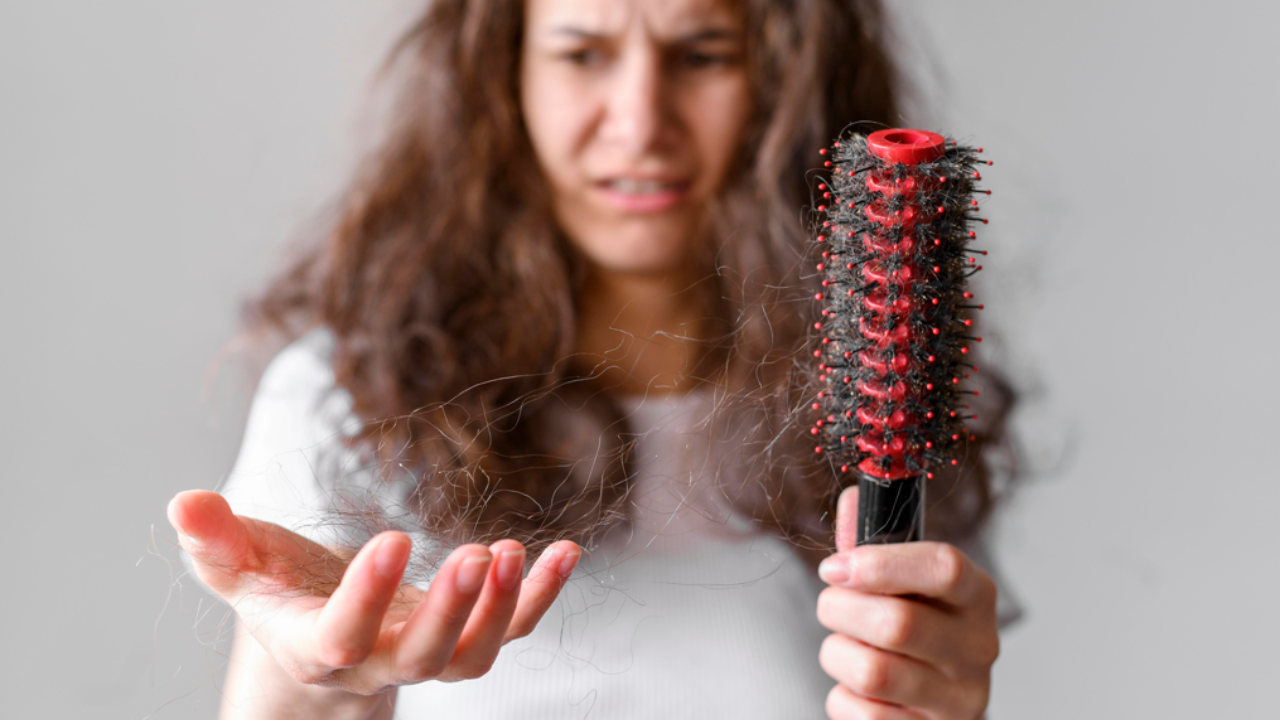Table Of Content

Also, be careful about giving supplements to a child, unless recommended by their healthcare provider. Here's how many strands you can expect to see in your brush, in the shower, and in your hands when you run them through your hair. During the test, a small bundle of hair (usually hairs) is grasped close to the scalp, and gentle traction is applied to pull the hair away from the scalp. The number of hairs that are extracted during the test is counted. If you are experiencing serious medical symptoms, please see the National Library of Medicine’s list of signs you need emergency medical attention or call 911.
Several hair strands come out when you pull or run your fingers through your hair
"Every form of hair loss is different and treatment depends on the type of hair loss the individual is dealing with," says Dr. McMichael. If you brush your hair less often, like a few times a week, you can expect to see an uptick of hair shedding, since strands will accumulate from not being brushed everyday. Ultimately, how much you see in your brush is dependent on your daily habits.
How Much Hair Loss is Considered Normal?
On the flip side, some people experience more shedding than the normal amount of hair loss during pregnancy. "You can get telogen effluvium in pregnancy too, depending on how your general health has been," says Kingsley. Hair loss is a common concern for many individuals, but it's important to understand what amount of hair loss is considered normal. On average, it is normal to lose between 50 and 100 strands of hair per day. This shedding is a natural part of the hair growth cycle and is usually replaced by new hair. It is common to notice an increased amount of hair shedding during or after a shower.

Products & Services
This could include weight loss (more than 20 pounds), illness especially if it involved a fever, or recovery from an operation, according to the AAD. Aside from your hair care schedule, there are other reasons a larger-than-usual loss of hair might be perfectly normal. These are three of the most common circumstances that can throw off how much hair you're losing daily.
How to Reduce Hair Shedding
On the plus side, that typically allows women with chronic hair loss to catch it earlier than men, Goren adds, likely because women tend to wear their hair on the longer side. According to the American Academy of Dermatology, it’s completely normal to shed anywhere between 50 to 100 strands of hair per day. However, if you’ve noticed more strands falling out of your head than normal, you may be experiencing alopecia, the medical term for hair loss. Common diagnoses include androgenetic alopecia, alopecia areata, telogen effluvium, and lymphocytic scarring alopecia, Agbai tells USA TODAY.
substantial weight loss over a short period of time
How Much Hair Do You Actually Lose in a Day? - InStyle
How Much Hair Do You Actually Lose in a Day?.
Posted: Fri, 24 Jun 2022 07:00:00 GMT [source]
It is typically temporary (unless the follicles are damaged). Most healthy people have between 80,000 and 120,000 hairs on their head. The authors of a 2017 study note that up to 9% of the hair follicles are in the resting stage at any given time, which means that they are ready for the strand to fall out. A person who notices large chunks of hair falling out or bald spots may wish to see a doctor or dermatologist, however. This excessive shedding may be due to stress or another health issue. The hair growth cycle can get disrupted due to illness, dieting, stress.
Before pursuing hair loss treatment, talk with your doctor about the cause of your hair loss and treatment options. Vitamin D and iron deficiency are both implicated in hair loss, Dr. Mirmirani says. If you are concerned that your diet may be lacking in these nutrients, ask your doctor if you should get a blood test to check your levels.
This cycle repeats itself for as long as the hair follicle remains active and continues to produce new hairs. Hairs in the telogen phase are also called “club hairs.” During this phase, a hair strand will be at rest as it prepares to detach from your scalp. About 8 to 9 percent of your hair is in this phase at any given time. There are several reasons why you might be losing your hair. According to Agbai, genetics, hormonal shifts, stress, underlying medical conditions, nutritional deficiencies, and scalp inflammation are notable factors.
How to combat hair loss as you age
Yadav explains that the growth phase, known as anagen, is followed by the transition phase, or catagen, when hair growth slows down. The resting phase, or telogen, is when no growth or shedding occurs, but new hair growth behind it is preparing to emerge. After that, the hair growth cycle, which can take up to eight years, starts again.
Hair Loss: Why It's Happening to Millennials - Healthline
Hair Loss: Why It's Happening to Millennials.
Posted: Fri, 28 Sep 2018 07:00:00 GMT [source]
While we know that stress is an undeniable factor in most people’s lives, its impact on so many aspects of our physical and mental health is perhaps more far reaching than we might imagine. When it comes to our hair, stress is the second biggest cause of hair loss after genetics, but because the process usually takes anywhere between three and six months to happen, many people don’t make the connection. According to Healthline, other common types of alopecia include traction alopecia, telogen effluvium, alopecia areata, central centrifugal cicatricial alopecia (CCCA), and lichen planopilaris (LPP). If your hair just doesn't seem to look the same way that it used to when you style it, that too could be a sign that your hair might be thinning. If your straightened hair looks flat, your natural hair just doesn't have the life it used to, or your style won't hold, there might actually be a real reason for that.
The telltale signs of these conditions are chronic inflammation of the scalp and the scarring of hair follicles, which can result in irreversible hair loss, Agbai notes. If you’ve noticed an excessive amount of hair shedding, a receding hairline, or that the hair on the crown of your head becoming increasingly sparse, you’re probably experiencing a form of hair loss. Losing your hair can be a distressing experience, but you’re not alone.
Also known as seasonal hair loss, some people notice they lose more hair during summer or autumn or monsoon season. That’s due to a change in temperature, which triggers your hair follicles to enter a temporary resting phase. It’s important to consult with a dermatologist to determine the underlying cause of your hair loss and discuss the most appropriate treatment options. Some options for male and female hair loss include prescription medication like Finasteride and over the counter medications and topicals such as minoxidil. Injections to the scalp and Keravive scalp treatment can stimulate new hair growth. And research and development into hair loss supplements has earned the stamp of approval from scientists and dermatologists.

No comments:
Post a Comment